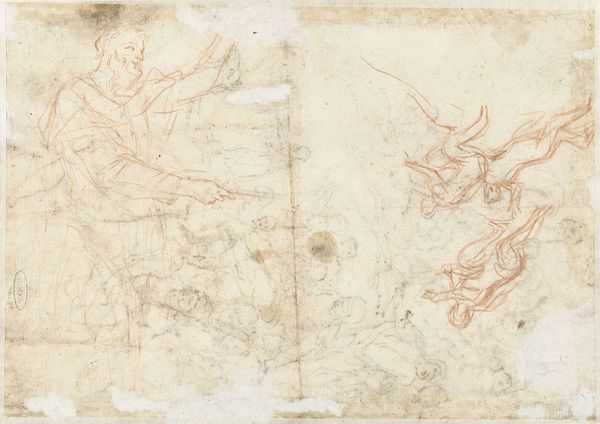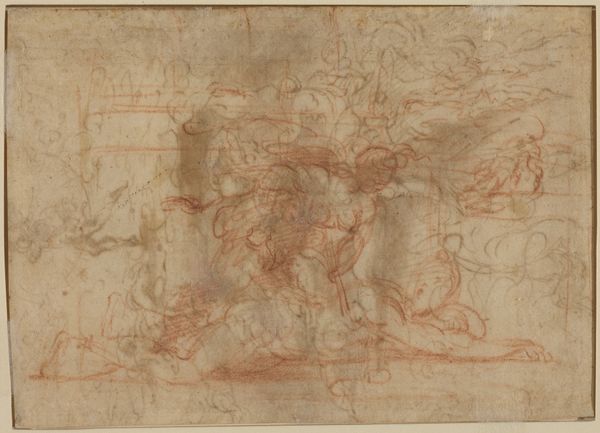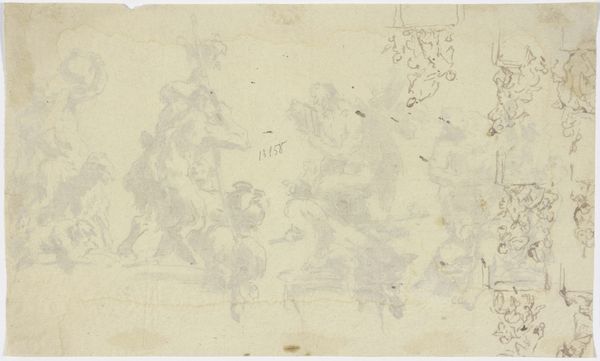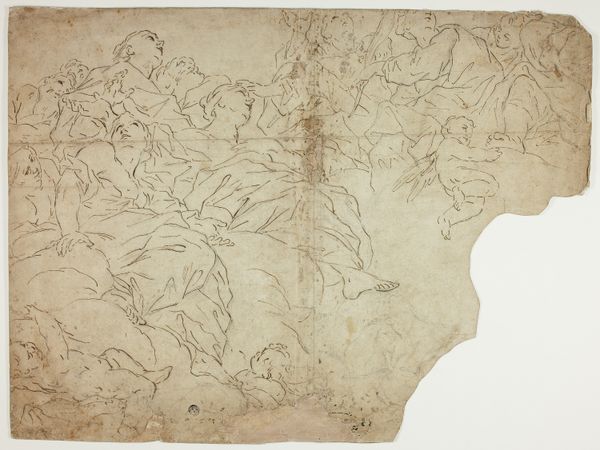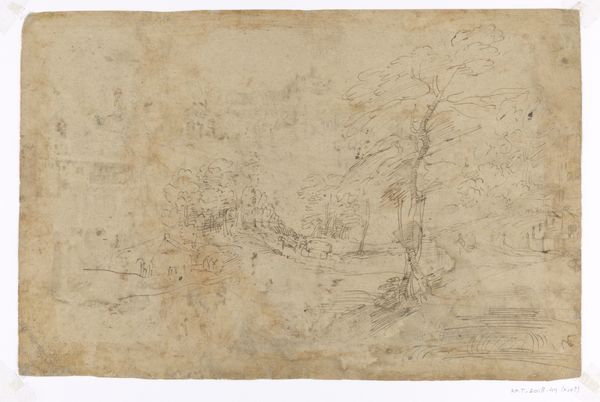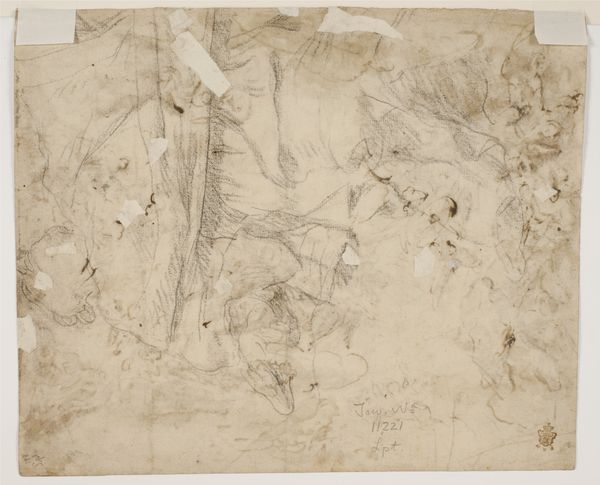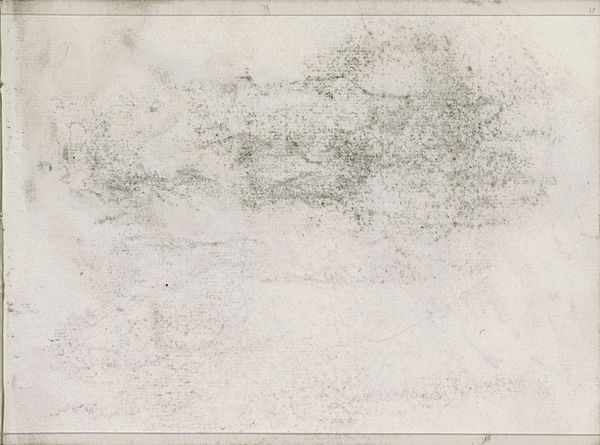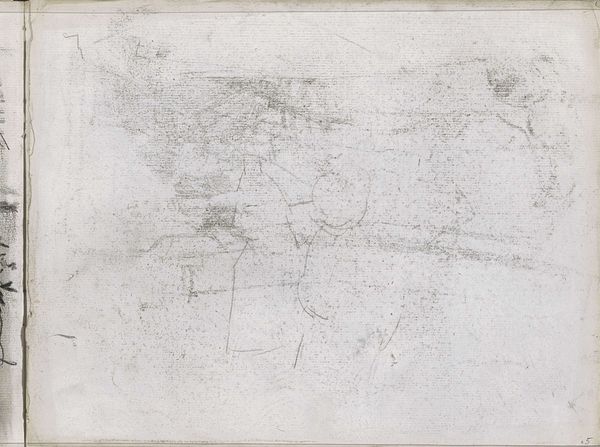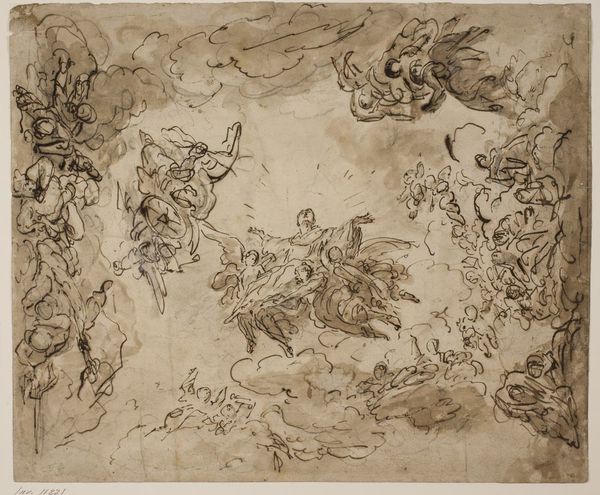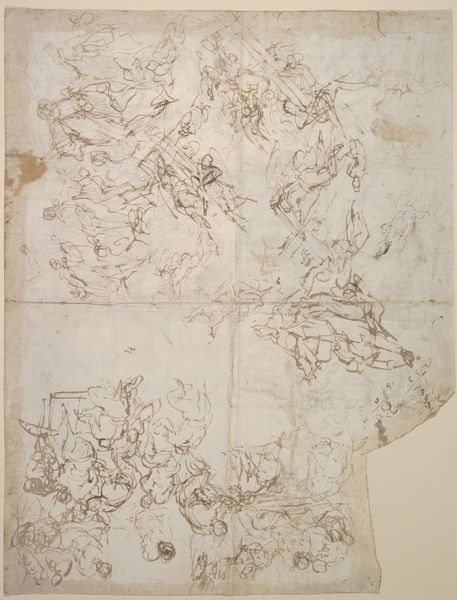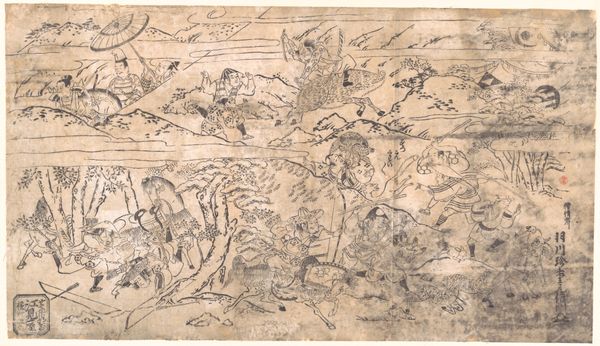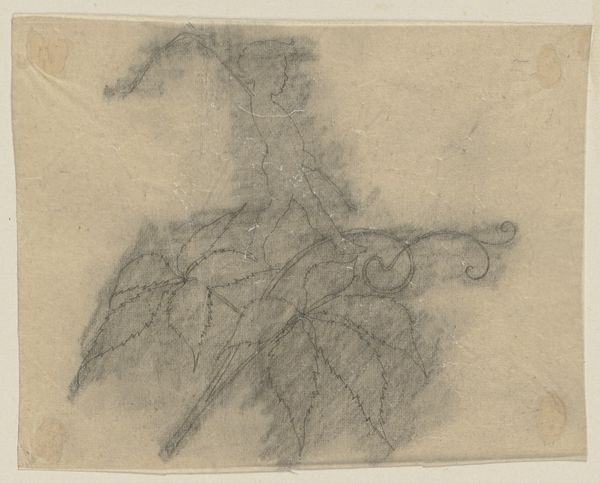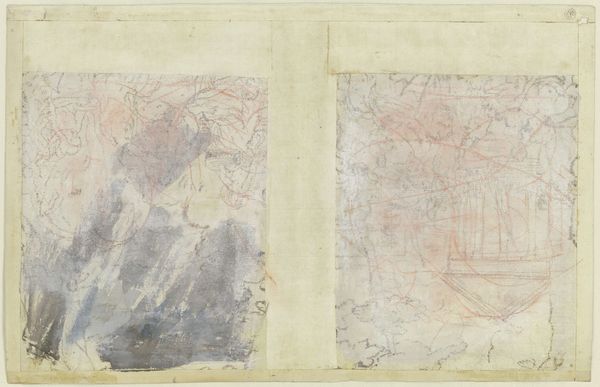
drawing, paper, dry-media, charcoal, pastel
#
drawing
#
toned paper
#
baroque
#
landscape
#
figuration
#
paper
#
dry-media
#
charcoal
#
pastel
#
history-painting
Dimensions: sheet: 18.9 x 27 cm (7 7/16 x 10 5/8 in.)
Copyright: National Gallery of Art: CC0 1.0
Curator: The immediacy in Pier Francesco Mola's drawing, circa 1660, titled "The Angel Appearing to Hagar in the Desert," strikes me first. It's restless. Editor: The visible hatching and the artist’s chosen media, charcoal and pastel on toned paper, amplify this sense of raw, unrefined emotion. The story behind it, though—the discarded Hagar in the wilderness—lends context to that initial response. What do we know of Mola's own conditions of art-making? Curator: What draws my attention immediately is the swirling composition, how Mola has built the forms out of almost chaotic lines, which gain focus around the figures. The dramatic diagonal sweep certainly leads the eye from Hagar towards the ethereal angel. Editor: I think the material reality also has to be brought into play. Mola, operating in a specific social environment, would have had particular resources available to him. Consider the quality of the paper, the sourcing of the charcoal, the social position influencing these materials available and the artistic decisions that came with those means. These are decisions rooted in production. Curator: But aren't these material realities also shaped by choices intended to provoke feeling? The blurred lines of pastel on the paper gives a kind of mystical ambiguity fitting of its biblical subject! Even if partially dictated by economics of materials, its formal effect generates a transcendental aesthetic experience for the viewer. Editor: Yes, of course, I don’t disagree! But there’s a reciprocal relationship here, with the materials helping determine which narratives Mola can realistically bring into being given production means available. He’s using what he has at hand to tap into what's readily understood around him! It's as much socio-economic, a commentary of these means as it is just representational of feelings, and therefore religious. Curator: It does suggest that the symbolic representation can arise organically through available processes of art-making and dissemination, the raw emotion we witness perhaps even partly accidental due to these materials he used... Editor: It highlights, in a fresh way, that art objects reflect those original conditions when first conceived by an artisan within specific material limits. Thank you for speaking, I found this artwork quite thought-provoking.
Comments
No comments
Be the first to comment and join the conversation on the ultimate creative platform.
